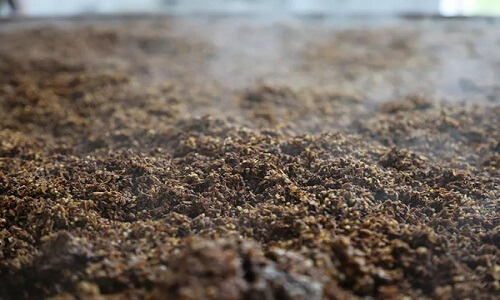Chemical materials for compost production
Apart from orgainc waste materials, chemical materials, such as biogas fermentation residue, composting residue, urea chemical fertilizers, and lime can also take as raw materials for compost production. The following chemical compost materials just for your reference.
Biogas fermentation residue
Through biogas fermentation, the easily decomposable components in the organic matter can be turned into biogas to generate energy, and the remaining biogas fermentation broth contains lignin, cellulose and salt which are not easily decomposed. The biogas fermentation broth can be used directly on the land or dehydrated to restore the land in the form of liquid fertilizer and compost. Recently, in the recycling of organic waste, it is recommended to carry out biogas fermentation first, and then compost the residue to improve the efficiency of compounding and recycling organic waste.
Composting residue
Composting material can usually be used as a conditioning agent for wet materials. Because C/N is moderately low, it usually needs to be mixed with other materials.
The return moisture content is not high, it is suitable for mixing with medium moisture content materials, and can partially provide initial microorganisms, but frequent recycling may cause the salt concentration to be too high, without increasing the C/N and reducing the moisture content of the mixture.
Urea and other fertilizers
Fertilizers such as urea or other high-concentration nitrogen sources are sometimes added to high-carbon feedstocks to reduce C/N.
These materials do reduce the initial C/N, but the effect is unlikely to be effective for a long time. Nitrogen in chemical fertilizers is more easily absorbed and utilized by microorganisms than organic matter. Especially when the easily decomposable carbon is quickly decomposed, nitrogen remains and is volatilized in the form of ammonia, so inorganic nitrogen utilization is usually low.
Lime
Like fertilizers, lime is also used as an additive to both adjust pH and control odors. The general raw material is that no lime is added, and excessive use causes the pH to rise, resulting in excessive loss of ammonia. Other raw materials with higher alkali concentrations such as furnace ash and wood ash are similar to lime.



